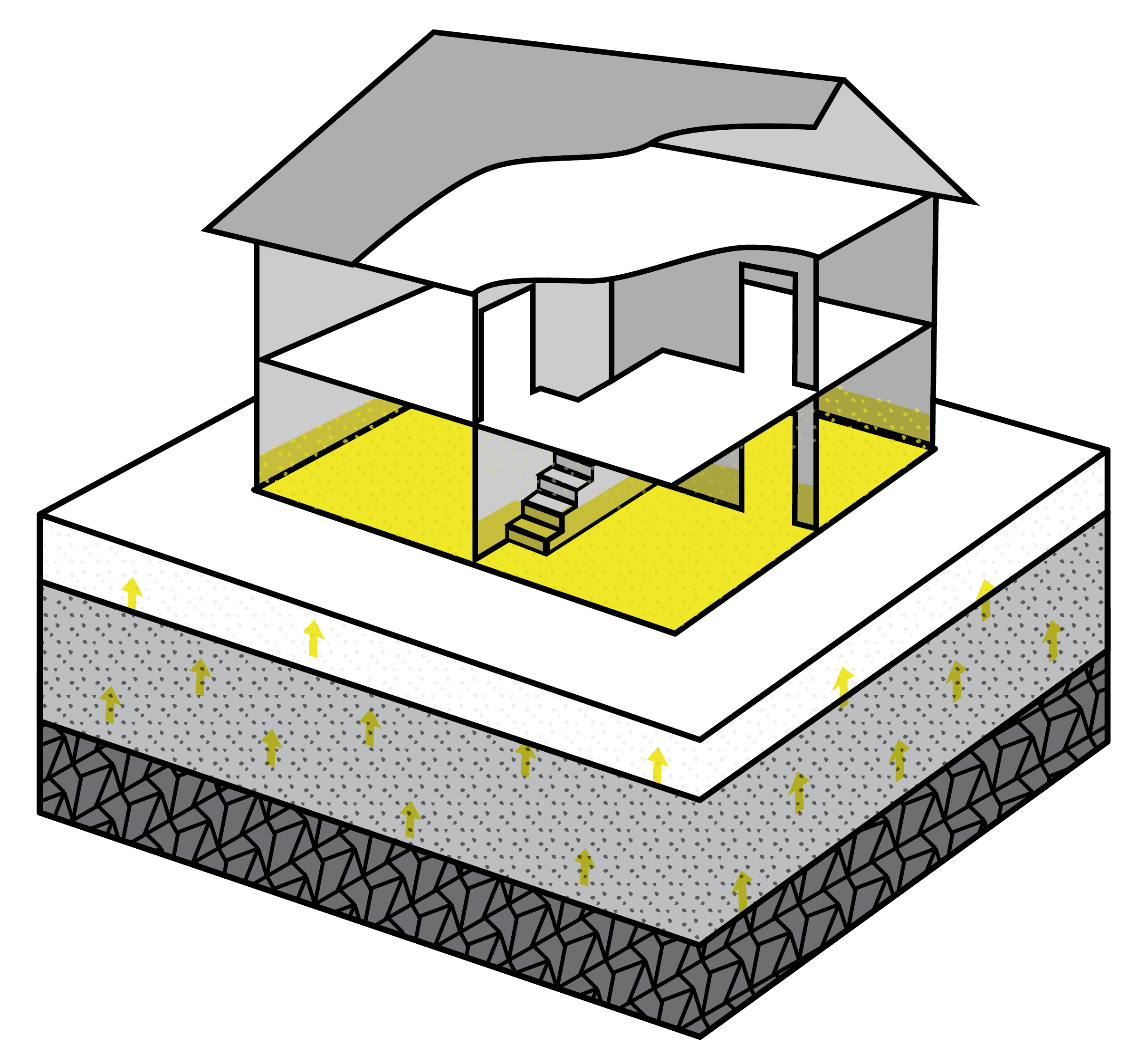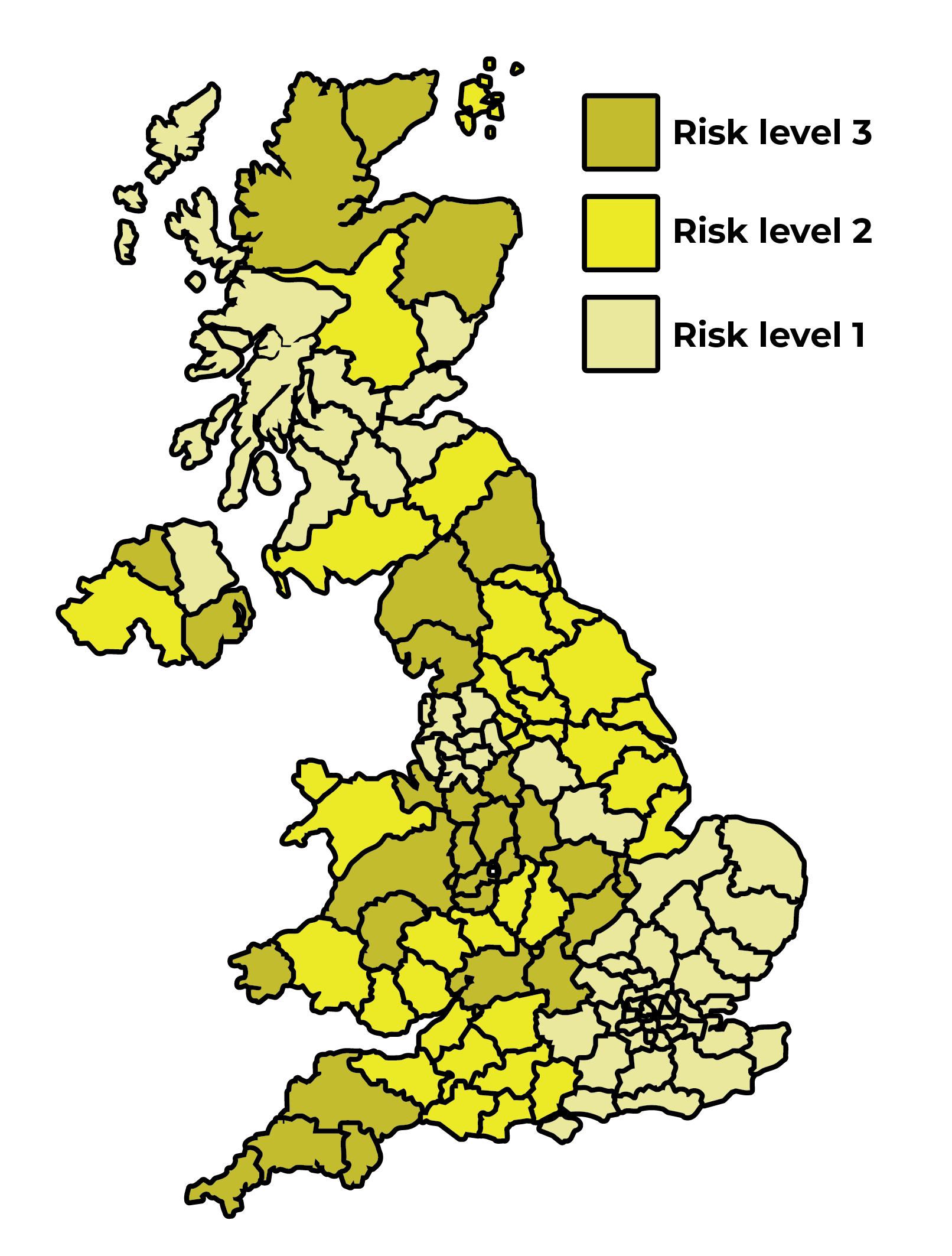About Radon

What is radon?
Radon is a radioactive gas. We cannot see, smell, or taste it; you need specialist equipment to detect it. It comes from rocks and soil and can be found throughout the UK. The radon level we breathe outside is extremely low but can be higher indoors.
How does radon enter the home?
Buildings naturally draw air in from the ground, through the cracks and gaps in the floors and this air will contain radon. Indoor radon often varies from building to building, within the same area. The only way to know the levels in each home is to test.
Worried About Radon?
Mouldex is an expert in radon treatment and mitigation. Our specialised team offers effective radon testing and can install systems on your property to significantly reduce radon.
Why is radon a risk to our health?
Elevated levels of radon can cause lung cancer, particularly for smokers and young children. Radon produces tiny radioactive particles in the air we breathe. Radiation from these particles damages our lung tissue and, over a prolonged period, may cause lung cancer. The higher the level and the longer the period of exposure, the greater the risk.
How is radon measured?
Radon is measured and expressed in units of activity per cubic metre of air: Bq m³. The average level in the UK is around 20 Bq m³, with levels as high as 10,000 Bq m³. The Government advises that remedial action should be taken in homes with an average annual radon level of 200 Bq m³ and workplaces with 300 Bq m³.
Where is radon found?
Radon is produced from the natural radioactive decay of uranium, which is found in all rocks and soils. Radon can also be found in water. Radon escapes from the ground into the air, where it decays and produces further radioactive particles.
Every building contains radon, but the levels are typically low. The chances of a higher level depend on the type of ground. UKHSA has published a map showing where elevated levels are more likely. Explore the map to review your area.

Worried About Radon?
Mouldex is an expert in radon treatment and mitigation. Our specialised team offers effective radon testing and can install systems on your property to significantly reduce radon.
How to test for radon
The best way to establish radon levels in your home is to measure it with a radon test kit. Due to weather conditions, temperatures and atmospheric pressure, radon levels vary daily, so UKHSA recommends that a measurement period should be at least 3 months. If a home is above 200Bq m³, remediation measures should be taken. Radon is only harmful if exposed to it over a prolonged period.
Our 3 Steps to Radon Mitigation
Radon Testing
One of our radon specialists will analyse the environmental conditions, assess the ventilation, and place specialist radon testing pods in the property and collect them after the testing process (typically 3 months) to give us an accurate reading of the radon levels within the property.
Installation
If the results of the testing indicate high levels of radon within the property, our expert team of installers is on hand to install and commission intelligent ventilation systems and specialised radon sumps to reduce levels and improve air quality.
Maintenance
Our technicians are on hand to clean and service existing systems and commission them as necessary. The ongoing remote monitoring systems enable us to track when maintenance of a system is necessary.